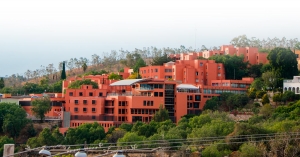About
In the modeling, optimization, and parallel computing group, we focus on developing computational methods applicable to solving problems in engineering, physics, logistics and planning, among other areas. We are specialists in different methodologies involved in this type of problem, including system modeling, generally through differential equations, and optimization methods, including both classical and heuristic methods.
Nowadays, many problems requiring modeling and optimization use large amounts of data and computation. Our group deals with such issues by using parallel computing through the high-performance computing laboratories at Cimat. We are experts in the development of parallel algorithms, including shared and distributed memory systems and GPUs.
One of the defining characteristics of our research group at Cimat is our commitment to innovation. We don't usually rely on existing libraries for application development; we pioneer new techniques for simulation and optimization. This often leads to creating our own software and developing efficient and effective algorithms. As a result, we are also involved in developing algorithms and data structures that can be implemented efficiently and harness the power of recent hardware.
In the optimization area, research is carried out in both single-objective and multi-objective optimization, using stochastic optimization techniques such as evolutionary algorithms, memetic algorithms, estimation of distribution algorithms, among others. We also develop mathematical programming techniques and gradient methods. Both are applied to global and constrained design and optimization problems that arise in various fields, such as logistics, cryptography, or civil engineering. Through establishing teams with students interested in these topics, we have a tradition of participating in optimization contests to validate and show the advantages of the innovations made in this area. This has resulted in various international awards.
In the modeling area, numerical solution models of partial differential equations are studied and developed using Finite Elements, Finite Volume, Finite Differences, and, recently, Discrete Exterior Calculus (DEC). These techniques are used to solve problems in engineering applications. Studies are carried out on fuel cell design, thermal modeling in solids, modeling of fluids in physical systems, design of complex structures in civil engineering, development of new materials, biological material applications, and numerical modeling of groundwater and floods.
In parallel computing, we work on different parallelization technologies and paradigms, such as OpenMP, MPI, and CUDA, applying these tools to the parallelization of modeling and optimization algorithms. We are specialists in the efficient use of this type of hardware and offer consulting and training services.
The members of this group collaborate with various research groups from numerous national and international institutions. Some of the institutions with which we have collaborated are the following: CIMNE, University of La Laguna and University of Málaga, in Spain, Napier University, in Scotland, University of Leipzig, in Germany, University of Guanajuato, Autonomous University of Zacatecas , Universidad Michoacana San Nicolás de Hidalgo ITESM, CINVESTAV, CentroGeo, CICESE, ITAM, Instituto Tecnológico de Mérida, Universidad Autónoma de Yucatán, and CICY, in Mexico. Through these collaborations, it is possible to expand the set of problems and techniques available to the team and develop multidisciplinary teams to address the problems.
Senior Researchers
Métodos numéricos, cómputo paralelo y optimización
Procesamiento de señales y visión por computadora
Métodos numéricos, cómputo paralelo y optimización
Procesamiento de señales y visión por computadora
Aprendizaje máquina y análisis de datos
Métodos numéricos, cómputo paralelo y optimización
Associate Researchers
Researchers for Mexico
Procesamiento de señales y visión por computadora
CC | Procesamiento de Señales y Visión por Computadora
Métodos numéricos, cómputo paralelo y optimización
CC | Métodos Numéricos, Cómputo Paralelo y Optimización
Post-Doctorates
CC | Métodos Numéricos, Cómputo Paralelo y Optimización
CC | Métodos Numéricos, Cómputo Paralelo y Optimización
CC | Métodos Numéricos, Cómputo Paralelo y Optimización








